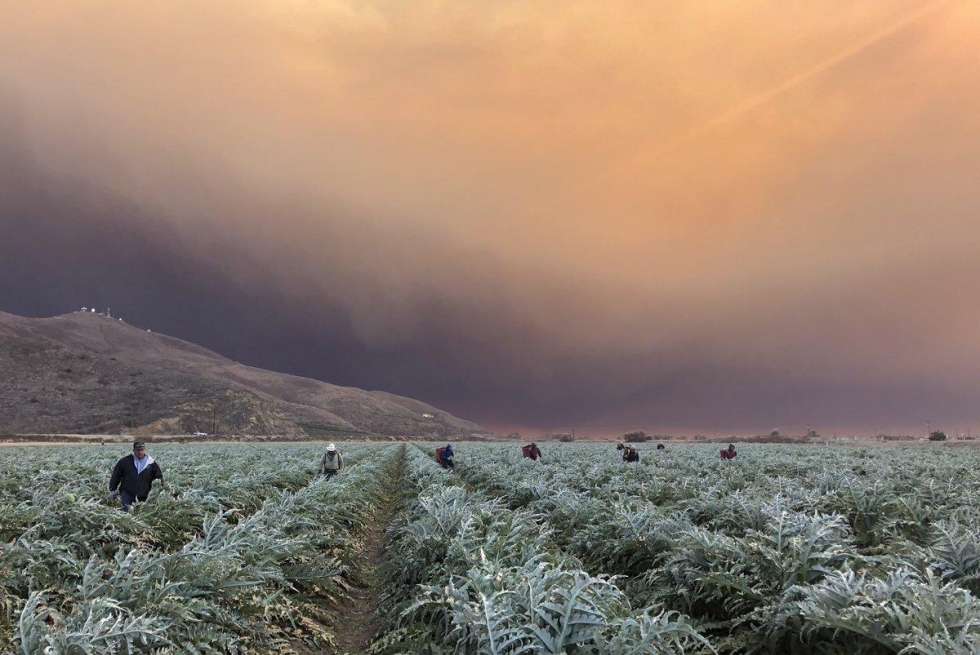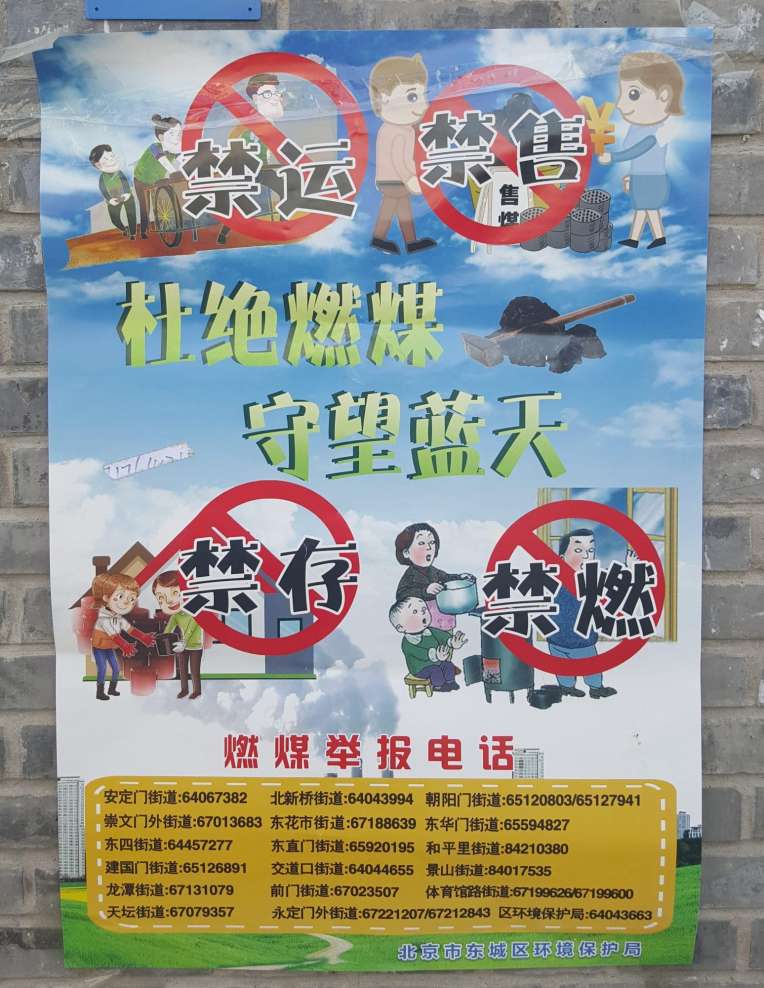Green Freeze: Fueling Discontent with Environmental Metrics
From the Series: Green Capitalism and Its Others
From the Series: Green Capitalism and Its Others

Chinese air pollution, often decried as smogaggedon or airpocalypse, infamously blankets homes and enters lungs. This happens in highly uneven ways, as expensive cafes, restaurants, and hotels boast top-of-the-line air purifiers, and many well-to-do people have filters in their own homes and offices, while the most privileged can afford to stay at home or go on a spontaneous holiday whenever the smog hits in the winter. But not only air pollution enters spaces and bodies in ways that exacerbate inequality. Access to heat also forms a contested and uneven terrain that can threaten lives with more immediate effect as temperatures fall well below freezing.

For half a century the Chinese state guaranteed domestic heating for northern urbanites in winter, fueled by dispersed coal boilers across urban landscapes. Chinese territories north of the Yangtze river are still covered by subsidized coal-fired urban heating systems. During “heating season” (gongnuanji) from November until March, this system heats urban and township apartment blocks as the temperatures fall, with an estimated four hundred million tons of coal. In the countryside, trucks deliver heaps of coal to rural courtyards, traders move through neighborhoods selling coal briquettes, and farmers stock up on the black fuel to light domestic heating systems.

The Coal-into-Gas (meigaiqi) policy in late 2017 attempted to turn the fuel in domestic heating systems throughout northern China from coal to gas. The policy seemed innocuous, and overdue, given rampant concerns over black lung, asthma, and cardiovascular disease from the combustion of coal. However, as the policy unfolded, hardship and tragedy ensued. As temperatures plunged well below freezing by early December 2017, many areas had already dismantled coal furnaces and stoves, and some were replaced with new heating installations, but others were not ready in time. Adding to this precarious situation, an acute shortage of natural gas and blackouts in the electricity grid occurred. Social media reports were rampant with residents in villages and small townships complaining of freezing, sometimes to death, as images of Hans Christian Anderson’s Little Match Girl circulated across virtual channels alongside instructions that “burning coal is strictly prohibited.”
These events revealed the barely contained cracks in Chinese heating and energy policy. Industrial workers and their families already struggled to make ends meet as decarbonization efforts closed mines and factories, while the cost of installing new heating systems and the rapid rise of gas prices compounded problems of provision. In response, the ministry of environmental protection sent task teams to local areas to figure out whether the situation was as dire as media reports suggested. Upon their return to the capitol only one week later, Beijing ordered local governments to immediately suspend the policy, pulling an emergency break rarely used in China, as it recognized the party and its policy as fallible. In short, to stem unrest and avoid confrontation, the government brought operations to an abrupt halt.
Yet these are not isolated incidents. In recent years, waves of unrest surrounding access to fuel have proliferated globally, including the gilets jaunes protests in France, the petrol and diesel blockades in Zimbabwe, and the gasolinazos demonstrations in Mexico. Heating the domestic as a prism for political order extends beyond China, for instance to Chicago housing projects where the neoliberal expectation of self-provision grates with memories of abundant “project heat” before the arrival of austerity politics (Fennell 2015). Limiting access to basic utilities has often been justified in terms of austerity politics in which the financialization of utilities takes precedence over service delivery (Muehlebach 2017). Obsession with metering, for water, energy, heating, often targets the poorest and weakest populations, despite their low levels of resource consumption compared to industrial facilities or affluent counterparts. At times the actual bureaucratic enforcers and installations engineers improvise the work of inclusion, for instance when installing water metering in Mumbai (Anand 2017) or bypassing electricity meters in Dar Es Salaam (Degani 2017).

Nonetheless, the Chinese case offers us a unique prism on another dynamic: just as price acts as a proxy for access to fuel, green metrics can enable capitalist enclosures, foster riots, and reframe resistance. Lofty blue-sky promises rang particularly hollow for residents in the coal province of Shanxi. After decades of suffering atmospheric pollution and landscape degradation, calls to decarbonize the economy led to mine closures and massive layoffs, exacerbating energy austerity in the midst of a landscape marred by extraction. As centers for the accumulation of capital detach from sites of production and labor and diffuse into spheres for the realization and circulation of value (Harvey 2017), companies and states sitting at the nodes of these new movements of capital, from online retailers and audit consultancies to national banks and software developers, become particularly well placed to extract, utilize, and accumulate the profits from this transition (Pitts 2017).
Green metrics play into their hands. Of course, capitalism’s devaluation of nature as “cheap” cannot be solved with any “green arithmetic” of remuneration (Moore 2015). Describing the coal-into-gas policy, Shanxi residents compared events to Maoist policies that exacerbated scarcity and violence. Local government cadres who wanted to boast green metrics echoed attempts to attain or falsify grain quotas, leading to the Great Leap Famine of 1959–1961. The zeal with which defiant coal users were punished for resisting gas was reminiscent of attacks on innocents for their class positions in the Great Proletarian Cultural Revolution. Flouting official proclamations, Shanxi residents undermined coal limits in heating, cooking, and mining by circulating emergency fuel and reinforcing local solidarities. As struggles to meet basic needs become reframed as environmental necessity, climate change, toxic pollution, and degraded ecosystems can be enlisted to diminish the already squeezed livelihoods of vulnerable populations. Rather than reading these responses as anti-environmental per se, this defiance of green metrics can also form dispersed resistances to the unequal distribution of the spoils of environmental degradation and the costs of ecological redress.
Anand, Nikhil. 2017. Hydraulic City: Water and the Infrastructures of Citizenship in Mumbai. Durham, N.C.: Duke University Press.
Degani, Michael. 2017. “Modal Reasoning in Dar es Salaam’s Power Network.” American Ethnologist 44, no. 2: 300–314.
Fennell, Catherine. 2015. Last Project Standing: Civics and Sympathy in Post-Welfare Chicago. Minneapolis: University of Minnesota Press.
Harvey, David. 2017. Marx, Capital, and the Madness of Economic Reason. Oxford: Oxford University Press.
Moore, Jason W. 2015. Capitalism in the Web of Life: Ecology and the Accumulation of Capital. London: Verso.
Muehlebach, Andrea. 2017. “The Price of Austerity: Vital Politics and the Struggle for Public Water in Southern Italy.” Anthropology Today 3, no. 5: 20–23.
Pitts, Frederick Harry. 2017. Critiquing Capitalism Today: New Ways to Read Marx. New York: Palgrave Macmillan.